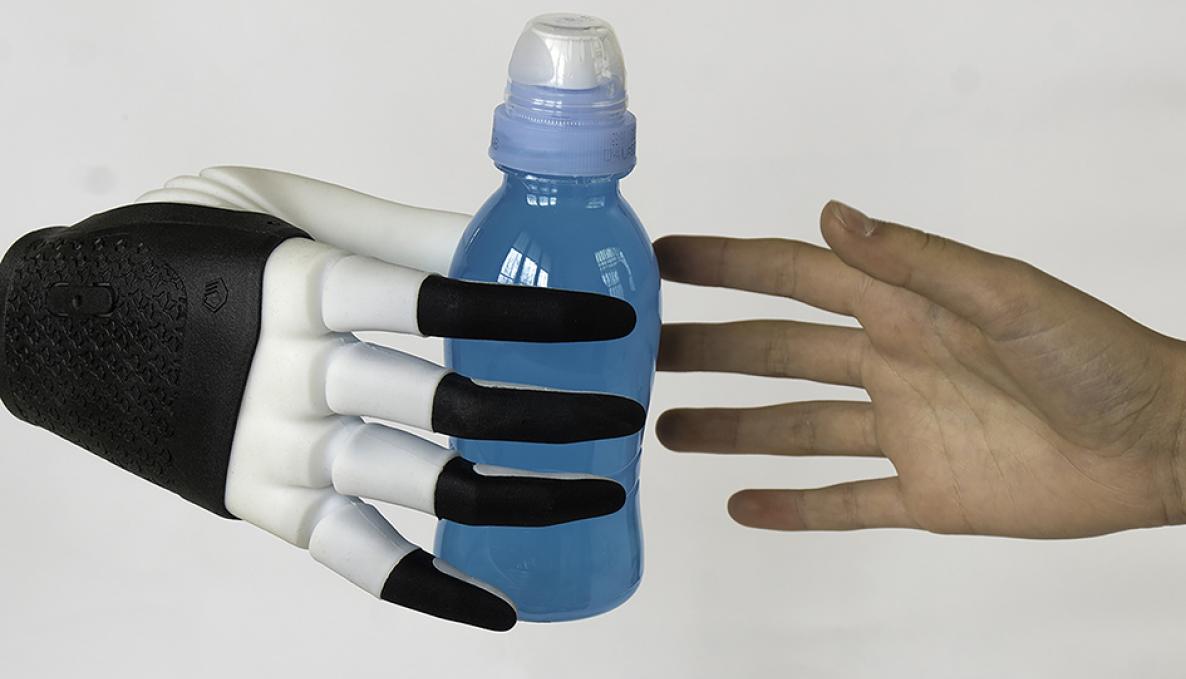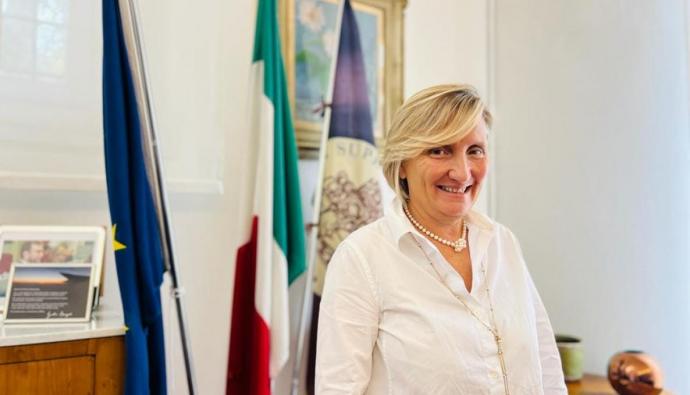EU supports an ambitious project for brain machine body connectivity. The B-CRATOS project aims at creating the first battery-free high-speed wireless in-body communication platform for Brain-Machine-Body connectivity

The B-CRATOS project aims at creating the first battery-free high-speed wireless in-body communication platform for Brain-Machine-Body connectivity. Highly ambitious, this collaborative undertaking merges expertise and cutting-edge technologies from the fields of novel wireless communication, neuroscience, bionics, AI (artificial intelligence) and sensing.
As part of the four-year B-CRATOS “Wireless Brain-Connect inteRfAce TO machineS” project, researchers will be developing wireless body area networks (WBANs) with the aim of connecting the nervous system with signalling systems to stimulate various functions, primarily in prostheses. However, in the long-term, the goal will be to do the same even in muscles and internal organs. This will be achieved through the use of chip implants in parts of the body that need to communicate.
B-CRATOS has a budget of approximately EUR 4.5 million and brings together seven partners from higher education institutions, businesses and institutes across Europe. Among the participants is The BioRobotics Institute, Scuola Superiore Sant'Anna, based in Pisa that specializes in robotic arms that can be controlled using brain signals. These brain signals will be captured by electronic chips that will be manufactured by a project business partner. Another partner will use AI and high-performance data computing facilities to map neural patterns in combination with motor control. A fourth partner will make modules that can wirelessly transport data and power to implanted devices in the brain. Uppsala researchers have developed a technology that involves enclosing the microwave signals in the slender space between the skin and the muscle layer. This natural fat layer encapsulates the signals while simultaneously allowing them to propagate. Thus, the device is able to transmit at frequencies as high as 5.8 gigahertz over distances of around a meter. Finally, a German partner will validate this new technology in tests with non-human primates.
B-CRATOS will overcome major challenges relating to power consumption, batteries, and data transmission bandwidth by developing a breakthrough with battery-free bidirectional wireless communication technology. The revolutionary signal-bridge technology will impact healthcare, quality-of-life, human cognition. Key Enabling Technologies for this closed-loop functionality include ultra-low-power ASIC brain implants with read/write capability, in-body battery-free high-speed wireless communications systems and human-like artificial sensors and limbs.
Robin Augustine, B-CRATOS coordinator, said “In the past, we worked with surgically implanted medical devices connected to the Internet. However, the idea is that these systems will communicate without involving an external computer. For example, the prosthesis can function as a spoon that you are conscious of using. But you never feel like it is part of your body, because it is not cognitively integrated into the brain’s processing system. Instead, we want to create a direct connection between a person’s artificial arm, leg or other body part and their brain so that it can sense its presence and experience control over this body part. This requires an implant in the brain.”
This project has received funding from the European Union’s Horizon 2020 research and innovation programme under Grant Agreement No. 965044.
About the B-CRATOS Partners
Uppsala University, B-CRATOS coordinator, is a research university in Uppsala, Sweden. Founded in 1477, it is the oldest university in Scandinavia. It ranks among the world's 100 best universities in several high-profile international rankings. The university uses "Gratiae veritas naturae" as its motto and embraces natural sciences. Uppsala belongs to the Coimbra Group of European universities and to the Guild of European Research-Intensive Universities. The university has nine faculties distributed over three "disciplinary domains". It has about 50,000 registered students and 2,300 doctoral students. Of its turnover of SEK 7.4 billion (approx. USD 870 million) in 2020, 29% was spent on education at Bachelor's and Master's level, while 70% was spent on research and research education programs. Uppsala University is involved in a total of 236 projects in Horizon 2020, of which we coordinate 16 of these granted projects (until May 2020). In addition, we are currently involved in five projects under other Directorate Generale under the commission. With a total workforce currently comprising about 40 active scientists, the Division of Solid-State Electronics, Department of Electrical Engineering, Uppsala University, has three major focus areas: Electronics for Life Sciences and Medical Technologies, Electronics for Brian-Inspired Computing and Energy-Efficient Electronics. The goal is to develop technical solutions from individual units to small systems, often starting from novel material and device solutions. We strive for innovations related to electronic sensors, biomechatronics, neuroprosthetics and medical systems for continuous and real-time health monitoring. We also invest in energy conversion and electricity generation to operate small self-supporting sensor systems. The technological base for our research is thin-film technology, semiconductor processing and semiconductor device technology using the in-house state-of-art cleanroom facilities, supported by device and process simulation as well as electrical and optical characterisation. For the Life-Science Technologies aspect, our research objective is to develop technological solutions, from devices to small systems, for comprehensive analysis of genome, proteome, and transcriptome signatures of individuals, thereby enabling AI assisted predictive diagnosis and preemptive therapy. For the Medical Technologies aspect, we strive for innovations such as near-body-network systems, point-of-care electronic sensors, and battery-free wearable and medical systems for continuous and real-time health monitoring.
Further information on Uppsala University can be found at www.uu.se
The SiNANO Institute is the European Academic and Scientific Association for Nanoelectronics, gathering 24 renown Universities and Research Centers from 15 European countries. Sinano carries out a role of representation and coordination of the associated Organizations in order to strengthen the impact of the research activities at EU level in this very important field for many future applications and markets.
Members of the Institute are particularly exploring disruptive science and technology aspects for long term to identify the most promising topics for future ICT and speed up technological innovation. Activities from More Moore, More than Moore, Beyond CMOS to Smart Systems and System Design are sound competences of Sinano. We are also organizing international Workshops and Conferences to develop high competence levels in Europe, and participating in roadmap definition. In this respect, the Sinano Institute is the European representative of IRDS. Sinano plays an important role in European structuring and programs, in collaboration with Research Institutes and Industry, and strengthens the overall efficiency of the European research in Nanoelectronics.
More information on: www.sinano.eu
The BioRobotics Institute of Scuola Superiore Sant’Anna is an integrated system pursuing frontier research, advanced education and innovation in the fields of biorobotics and bionics. The Institute explores the possibility to reach an inexhaustible springboard for the creation of applications that are useful for man. This is achieved through bioengineering, mechatronics and robotics as well as smart systems inspired by the living world. The BioRobotics Institute has built a vast wealth of knowledge and expertise in several fields such as: social robotics, industrial robotics, assistive/rehabilitation/surgical robotics, neural engineering, cognitive systems, bio-inspired robots and their ethical, legal, social and economic implications.
The Institute aims to act as a linking bridge among international centres of knowledge and to create a new concept of engineers that are scientists, inventors, entrepreneurs and problem solvers.
Further information on Sant’ Anna Pisa can be found at: www.biorobotics.santannapisa.it
Blackrock Microsystems Europe GmbH's mission is to provide innovative tools and neurotech expertise to translate technology into novel, implantable clinical solutions that improve human lives. A leading provider of technology in the neuroscience, neural engineering, and neural prosthetics space, Blackrock’s technology is at the core of worldwide innovations in Brain-Computer-Interfaces (BCI). Enabled by our expertise in precision electrode technology, signal processing and stimulation, BCIPioneers have been able to MoveAgain, WalkAgain and TalkAgain.
For more information, please visit www.blackrockmicro.com
LINKS - Leading Innovation & Knowledge for Society is a Foundation born from an agreement between Compagnia di San Paolo and Politecnico di Torino counting more than 160 researchers that has been active in the fields of applied research, innovation and technology transfer at national and international level for about 20 years. Researchers at the Foundation master technical-scientific disciplines in several areas of engineering and architecture such as, for example, Artificial Intelligence, Smart Data, IoT, Photonics and Satellite Localization to carry out innovative projects in application sectors ranging from Industry 4.0 to Cybersecurity, from Intelligent Mobility to Agritech, from Space Applications to Medicine and Well Being, from Smart Cities to Cultural Heritage.
Further information on LINKS Foundation can be found at https://linksfoundation.com/
The Deutsches Primatenzentrum (DPZ; German Primate Center) is non-profit institute funded by the Federal Republic of Germany and its federal states. The DPZ's mission is to serve as a center of excellence for research with primates and as a service and competence center for those institutions in Germany and abroad that house primates and/or do primate-related research. The DPZ is organised in three sections: Infection Research, Organismic Primate Biology, and Neuroscience. The functions and services of the DPZ focus on biological research with primates comprising topics that may result in conclusions concerning human physiology, pathobiology and behaviour. Primate Husbandry is the central infrastructural unit with breeding colonies for Old and New World monkeys (1300 animals). The DPZ also runs field stations in Thailand, Madagascar, Peru and Senegal where research is focused on free-ranging primates in their natural habitats. Another key infrastructure is the MR-Imaging Center with two research scanners (3T and 9.3T), one for small and one for large animals.
The DPZ is core member of the Gottingen Campus, a network of institutions in Gottingen that includes the University of Gottingen, University Medical Center, several Max-Planck Institutes, and the European Neuroscience Institute.
For further information see here: www.dpz.eu/en
Norwegian University of Science and Technology (NTNU) is the largest and most important university in Norway. It has 14 faculties and 70 departments and divisions with an operating income of NOK 9.6 billion (€ 900 million). While NTNU’s primary responsible to educate Norway’s engineers and technical experts it offers more than 400 study programs in natural sciences, humanities, social sciences, economics, medicine, health sciences, education, architecture, entrepreneurship, and fine and performing arts. NTNU has approximately 42 379 students, roughly half of whom are in technical and scientific disciplines. In 2019, there were 7586 graduates with a completed degree, 6000 participants in continuing education courses with credit, 3000 international students, 406 doctoral degrees awarded. With a Nobel Prize in Medicine in 2014 it has so far produced 4 Nobel laureates.
Further information on the Norwegian University of Science and Technology can be found at www.ntnu.no



